Grasse
|
Grasse |
|
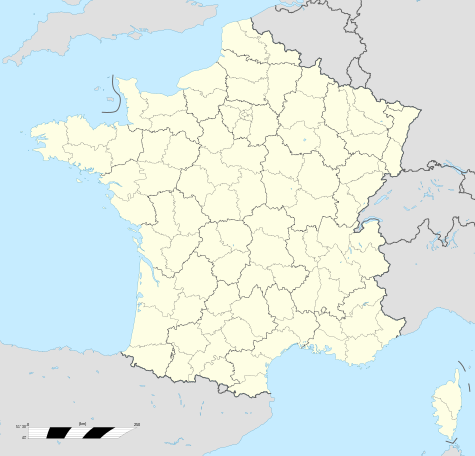 Grasse
|
|
| Administration | |
|---|---|
| Country | France |
| Region | Provence-Alpes-Côte d'Azur |
| Department | Alpes-Maritimes |
| Arrondissement | Grasse |
| Intercommunality | Pôle Azur Provence |
| Mayor | Jean-Pierre Leleux (2008–2014) |
| Statistics | |
| Elevation | 80–1,061 m (260–3,481 ft) (avg. 333 m/1,093 ft) |
| Land area1 | 44.44 km2 (17.16 sq mi) |
| Population2 | 51,294 (2006) |
| - Density | 1,154 /km2 (2,990 /sq mi) |
| INSEE/Postal code | 06069/ 06130 |
| 1 French Land Register data, which excludes lakes, ponds, glaciers > 1 km² (0.386 sq mi or 247 acres) and river estuaries. | |
| 2 Population sans doubles comptes: residents of multiple communes (e.g., students and military personnel) only counted once. | |
Grasse (Provençal Occitan: Grassa in classical norm or Grasso in Mistralian norm) is a commune in the Alpes-Maritimes department (of which it is a sub-prefecture), on the French Riviera.
The town is considered as the world's capital of perfume.[1] It obtained two flowers in the Concours des villes et villages fleuris contest [2] and was made "Ville d'Art et d'Histoire" (town of art and history) [3].
It is also called by some Internet town.[4]
Contents |
Main sights
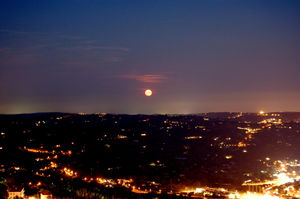
Grasse's main attraction is the Cathedral, dedicated to Notre Dame du Puy and founded in the 11th century. In the interior, are three works by Rubens and one by Jean-Honoré Fragonard, a French painter native of the town.
Other sights include:
- Saracen Tower, standing at 30 m.
- monumental gate of the Hôtel de ville.
- Fragonard Museum, established in 1921.
- International Museum of Perfume
- Musée d'Art et d'Histoire de Provence
- Church of Placassier, built in 1644
Perfume
Grasse has had a prospering perfume industry since the end of the 18th century.
Grasse is the center of the French perfume industry and is known as the world's perfume capital (la capitale mondiale des parfums). Many "noses" are trained or have spent time in Grasse. It produces over two-thirds of France's natural aromas (for perfume and for food flavourings). This industry turns over more than 600 million euros a year.
Grasse's particular microclimate encouraged the flower farming industry. It is warm and far enough inland to be sheltered from the sea air. There is an abundance of water, thanks to its situation in the hills and the 1860 construction of the Siagne canal for irrigation purposes. The town is 350 m (1,148.29 ft) above sea level and 20 km (12 mi) from the Coast (Côte d'Azur).
Jasmine, a key ingredient of many perfumes, was brought to southern France by the Moors, in the 16th century. Twenty-seven tonnes of jasmine are now harvested in Grasse every year.
There are numerous old 'parfumeries' in Grasse such as Molinard, Fragonard, Galimard each with tours and a museum.
Festivals
There is an annual Fête du Jasmin or La Jasminade, at the beginning of August. The first festival was on the 3 August–4 August 1946. These days, it is a big event; decorated floats drive through the town, with young women in skimpy costumes on board, throwing flowers onto the crowds. This is known as the 'flower battle' and everyone gets soaked by the natural perfume of the flowers. There are also fireworks, free parties, folk music groups and street performers. There is also an annual international exhibition of roses ("Expo Rose").
Personalities
Grasse was the birthplace of:
- Jean-Honoré Fragonard, painter
- Gazan de la Peyrière, general who fought under Napoleon
- Alexandre-Évariste Fragonard, painter and sculptor
- Charles Pasqua, businessman and politician
- Michèle Mouton, rally driver
- Thomas Pinault, professional footballer
- Albert Charpin, painter
- Gilles Marini, actor in Sex and the City, and season 8 contestant on American Dancing With the Stars
Grasse was the death place of:
- Christian Calmes
- Édith Piaf, French singer
- Prince Eugen of Bavaria
- Jean-Honoré Fragonard French artist (1732–1806)
International relations
Grasse is twinned with:
 Kazanlak, Bulgaria
Kazanlak, Bulgaria Ingolstadt, Germany
Ingolstadt, Germany Opole, Poland [5]
Opole, Poland [5]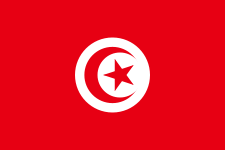 L'Ariana, Tunisia
L'Ariana, Tunisia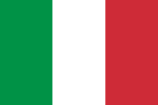 Carrara, Italy
Carrara, Italy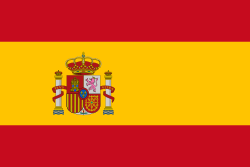 Murcia, Spain
Murcia, Spain Marblehead, USA
Marblehead, USA
Cultural references
The town is the setting in the final chapters of the novel Perfume by Patrick Süskind.
Also the final chapters of the feature film Perfume: The Story of a Murderer (2006), based on the novel.
See also
- Route Napoléon
- Ancient Diocese of Grasse
- Communes of the Alpes-Maritimes department
References
- ↑ Page Tourisme sur le site de la ville de Grasse (in French)
- ↑ Palmarès du Concours des villes et villages fleuris dans les Alpes-Maritimes (in French)
- ↑ Ministère de la Culture. "Fiche de Grasse appartenant aux villes du réseau ville d'art et d'histoire" (in French). http://www.vpah.culture.fr/vpah/paca/grasse-pr.htm. Retrieved 03/06/2007.
- ↑ Site officiel du réseau des villes internet. "Fiche de la ville de Grasse" (in French). http://www.villes-internet.net/UPLOAD/villes/pages/358/index.php. Retrieved 03/06/2007.
- ↑ "Opole Official Website - Twin Towns".
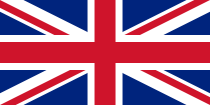
 (in English and Polish) © 2007-2009 Urząd Miasta Opola. http://www.opole.pl/miasto/index.php?option=com_content&task=blogcategory&id=20&Itemid=108. Retrieved 2009-06-18.
(in English and Polish) © 2007-2009 Urząd Miasta Opola. http://www.opole.pl/miasto/index.php?option=com_content&task=blogcategory&id=20&Itemid=108. Retrieved 2009-06-18.
External links
- Grasse travel guide from Wikitravel
- Grasse city council website (in French)
|
|||||